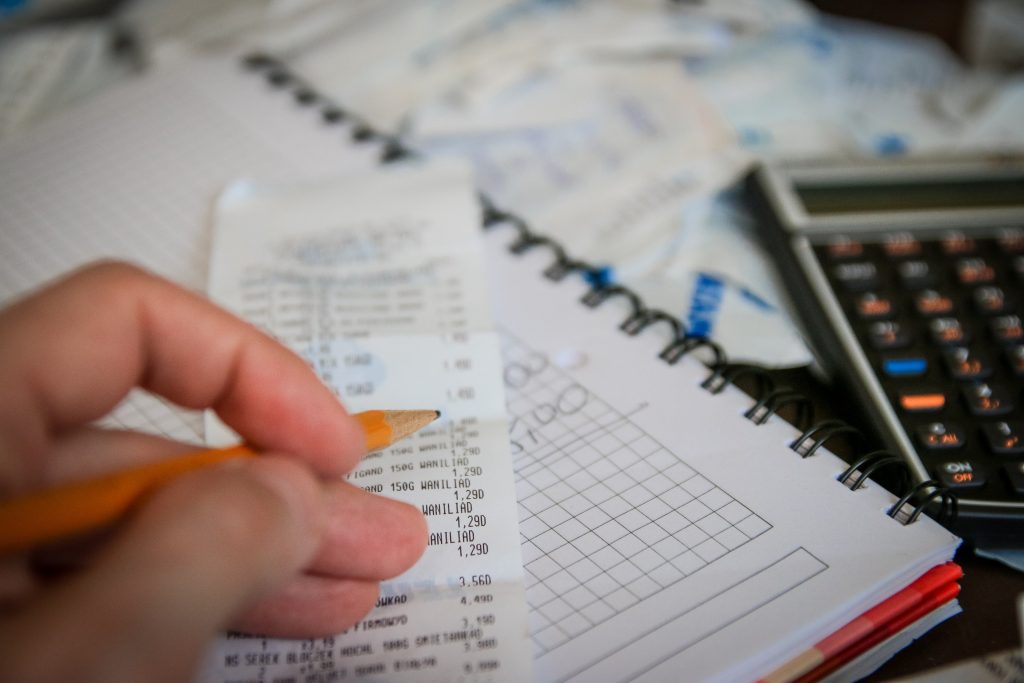Why Keep Records?
Keeping records is the best way to track your income and expenses. You can make better decisions for your family when you track the money you have and what you spend.
Records also provide information for income tax purposes. It is easier to file your taxes if you have organized records that track your spending on tax deductible items like medical/dental, day care costs and charitable donations. Even if you do not make any income, it is important to file income taxes to qualify for any government benefits.

What does tracking expenses involve?
There are a few ways you can track your spending. Choose the technique that works best for you and your family. Track your expenses and set up a simple filing system to hold monthly expense totals and important receipts (ones you might need for tax filing or warranties).
The Envelope Method (tracking by keeping bills and receipts)
- This works well if there are multiple people in your household spending money.
- Keep any grocery receipts, utility bills, sales receipts or credit card slips.
- Find a common place in the house (file folder, drawer, etc.) where everyone can put receipts. Make it a convenient spot so it is easy to remember to turn in receipts.
- Group receipts together according to expense categories. A good way is to use an envelope for each category.
- Problems with this system are that 1) you don’t always get a paper receipt anymore for everything you spend money on, and 2) it’s easy to forget to put your receipt in the file.
- Using credit card statements and bank statements at the end of the month, fill in any missed receipts in the final expense numbers.
- Create a Monthly Spending Summary sheet each month with expense numbers. You can calculate totals using pen/paper or by using a spreadsheet program to make a chart of your expenses. Download our Monthly Spending Summary spreadsheet to start tracking your expenses.
The Calendar Method (tracking on a monthly calendar)
- This method is great for having a clear visual look at your cash flow during the month.
- Use a blank calendar and start by marking in your income amounts, in one colour of pen, on the dates you receive it. Next, find a different coloured pen and write in the regular monthly expenses and bills that need to be paid. Using a third colour (if you have it), continue to write in your day-to-day expenses on the calendar. You will see right away when you are spending more than what you have. Use this method in combination with the envelope method so you not only have a clear monthly picture of when you are earning/spending money, but you also have receipts to check that everything was written down and your totals are accurate.
Financial Software Method (tracking expenses using personal finance software)
- Great option if your family is comfortable with using online programs.
- Most programs give the flexibility of adding multiple users into the same tracking (if you have a few people spending money in your household).
- Automatically connects with bank accounts and credit cards for information.
- Allows user to run reports anytime, track debts, set savings goals and see totals of expense categories.
- Here are a few trusted programs:
- Mint – Free budgeting tool that connects to bank accounts, debts and investments. Allows you to analyze your spending and look at financial net worth.
- Quicken – allows full management of your personal finances from bills and budgeting to tracking investments. There is a cost to download and annual fee.
- YNAB (You Need a Budget) – teaches financial literacy as you set up your budget. Automatically links to your bank account to track spending. Free trial available, then annual fee subscription.
- Mvelopes – creates a virtual envelope budgeting system for expenses and connects to bank account. Free trial, then monthly fee subscription.
People have less stress and worry when they know where money is being spent. Tracking expenses and keeping records will help you to spend your money on the things that matter the most.
Filing System for Expense Records
Set up a simple system for filing your records. An accordion file folder, file box or filing cabinet work well. Organize your records into different categories that suit your family: Medical, Insurance, School, Sports, Bank, Home, etc. You can use file folders or large envelopes to hold the receipts and papers you want to keep within each category.
File your monthly expense summaries in a separate folder so it is easy to find when Income Taxes need to be filed. No matter what your income, always file income taxes in order to have access to government programs and benefits like GST credit, Canada Child Benefit (CCB) and other income supports.
Read more about what benefits you may qualify for in Get Your Benefits.
Read these articles next:
Canadian Guidelines for Budgeting
Understanding Your Expenses






